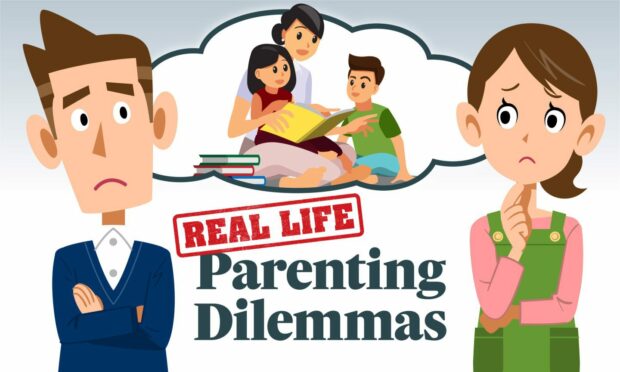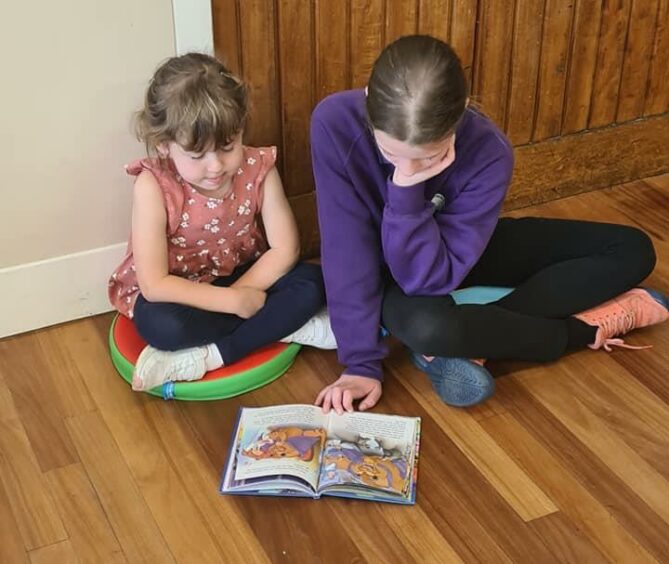It’s World Book Day next week, but does the event have much meaning beyond dressing up in vaguely literary costumes? In this digital age, we consider how to get kids interested in reading.
Sowing the seeds of literacy can start at a very young age. Even babies can massively benefit from storytelling, with boosts in speech and language development.
Yet research from the National Literacy Trust suggests that less than half of parents are reading to their children every day.
More than ever before, family life is busy and fragmented. There are seemingly endless sports, clubs, play dates and social occasions to fit in – and that’s on top of nursery and school.
Left to their own devices, many kids are – well – left playing with their devices.
But reading to your children is one of the best ways to instil a love of books that can last for life. Research also suggests that it improves literacy, vocabulary, concentration and creativity.
So how do you start that positive habit?
Reading to children is a ‘wonderful bonding opportunity’
Joolz Christie, a High Life Highland librarian and mother, recommends starting small and building from there.
Joolz read to her own kids when they were small, and even as teens they have fond memories of that time together. “I asked them about it and they came up with loads of stuff about the bonding time, the imagination… they loved it and I loved it,” she told The P&J.
“We live such busy lives, and with technology it’s so easy to just chuck them in front of a screen. I’m not judging that. But even just setting aside 20 minutes at the end of every day is such a wonderful bonding opportunity, and it does wonders for their imagination and vocabulary too.”
Spending a little time reading to children every day will soon turn into a positive habit for everyone.
Joolz runs Book Bug storytelling sessions in Highland libraries for the Scottish Book Trust. In her experience, picture and rhyming books are the best for keeping little ones engaged. She has also found that boys’ attention tends to stray quicker than girls, though that’s a generalisation and not a rule.
Think short, creative and interactive
The best way to keep any kid interested in reading is to follow their lead.
Joolz suggests finding books that reflect your child’s natural interests. While it’s tempting to read your own childhood favourites, some of those books may be dated now. (Any other parents sick of Biff, Chip and Kipper?)
Try books that are a bit more creative and interactive. Many little ones love making up their own endings to stories, for example.
Another top tip is to get siblings involved. Younger kids often relish spending time with their older brother or sister, so if they’re willing, ask them to read together. Chances are, it’s something they’ll both remember fondly when they’re older.
If your kid is far more into screens than pages, don’t worry – reading on a screen is still reading! These days there are lots of fantastic educational apps that kids of all ages can enjoy.
Try your local Book Bug
Still stuck? Scottish Book Trust has lots of ways to help families get into reading.
If the cost-of-living crisis presents a barrier, Scottish Book Trust regularly gives away books through schools.
They also run free Book Bug sessions in local libraries. These are a great way of building confidence in reading and socialising with other parents and kids.
The Scottish Book Trust website also has lots of tips and advice for encouraging reading to children of all ages.
For instance, did you ever consider that for older kids, books are linked to the anxiety of exams? The Scottish Book Trust recommends reconnecting the books your child reads with their own natural hobbies and interests. That way, they can reclaim reading for pleasure.
And if you’re in any doubt of the power of books, check out this stunning personal essay by Leah Findlay of Mintlaw Academy, winner of the 2020 Penguin Books Creative Student Prize. Leah writes:
“When my dad died, I buried myself even deeper in my fantasies. I cried for the characters in my books, and pretended that I wasn’t crying for my dad. I imagined myself as these battle-scarred yet triumphant characters I read about, hoping that I could triumph too. Maybe, with the help of my books, I could emerge from my battles victorious, and everything would be fine.
“Books helped me to lose myself, but they also helped me find myself.
“I think of everything books have helped me through, and all the wars we have fought together. But most of all, I think of how grateful I am that my parents read to me when I was small.”



Conversation